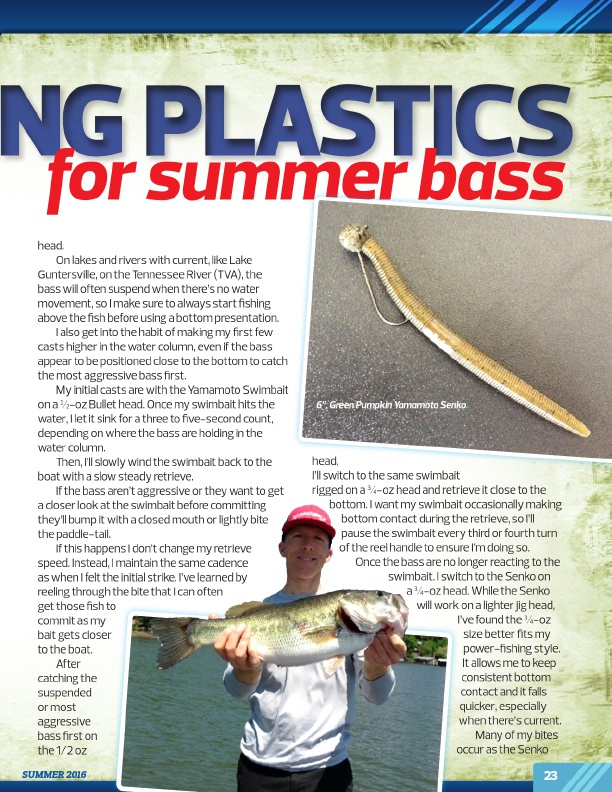
NG PL AST I C S
for summer bass
head.
On lakes and rivers with current, like Lake Guntersville, on the Tennessee River (TVA), the bass will often suspend when there’s no water movement, so I make sure to always start fishing above the fish before using a bottom presentation.
I also get into the habit of making my first few casts higher in the water column, even if the bass appear to be positioned close to the bottom to catch the most aggressive bass first.
My initial casts are with the Yamamoto Swimbait on a ½-oz Bullet head. Once my swimbait hits the water, I let it sink for a three to five-second count, depending on where the bass are holding in the water column.
Then, I’ll slowly wind the swimbait back to the boat with a slow steady retrieve.
If the bass aren’t aggressive or they want to get a closer look at the swimbait before committing they’ll bump it with a closed mouth or lightly bite the paddle-tail.
If this happens I don’t change my retrieve speed. Instead, I maintain the same cadence as when I felt the initial strike. I’ve learned by reeling through the bite that I can often get those fish to commit as my bait gets closer to the boat.
After catching the suspended or most aggressive bass first on the 1/2 oz
SUMMER 2016
6”, Green Pumpkin Yamamoto Senko
head, I’ll switch to the same swimbait rigged on a ¾-oz head and retrieve it close to the
bottom. I want my swimbait occasionally making
bottom contact during the retrieve, so I’ll
pause the swimbait every third or fourth turn
of the reel handle to ensure I’m doing so.
Once the bass are no longer reacting to the
swimbait. I switch to the Senko on
a ¾-oz head. While the Senko
will work on a lighter jig head,
I’ve found the ¾-oz
size better fits my
power-fishing style.
It allows me to keep
consistent bottom
contact and it falls
quicker, especially
when there’s current.
Many of my bites
occur as the Senko
23